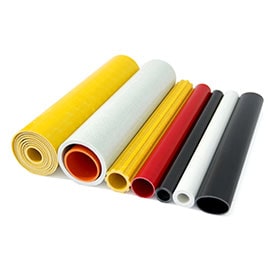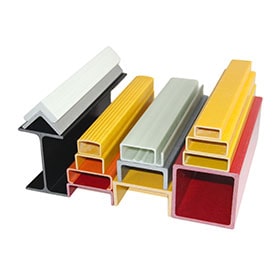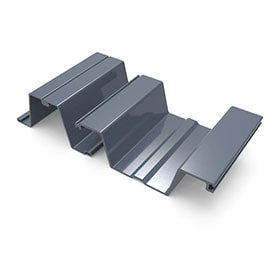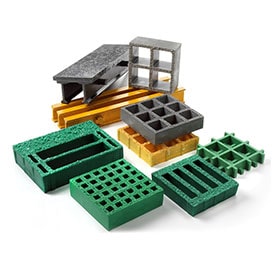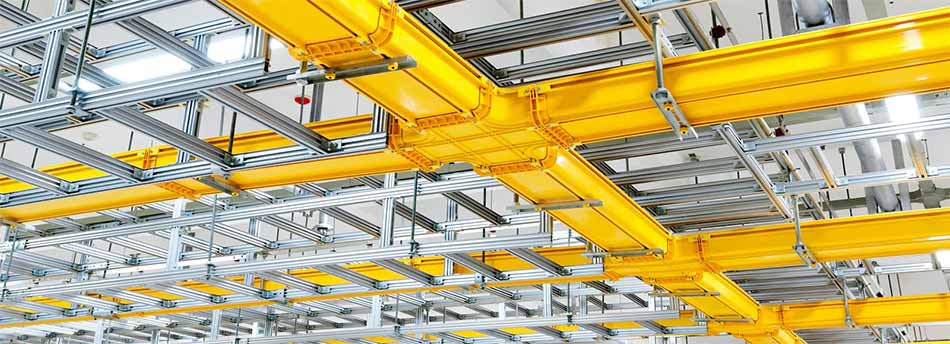
Fiberglass Profiles in Cable Trays System
Cable trays are structures that support electrical cables and wires in various industries and applications. They provide a safe, organized, and efficient way of routing and protecting cables from damage and corrosion. Cable trays can be made of different materials, such as metal, plastic, or fiberglass. However, fiberglass profiles have some unique advantages over other materials, especially in harsh and corrosive environments.
What are Fiberglass Profiles?
Fiberglass profiles are pultruded products that are made of continuous glass fibers and thermosetting resin. Pultrusion is a process that pulls the fibers and resin through a heated die, forming a solid profile with a constant cross-section. Fiberglass profiles can have various shapes and sizes, such as angles, channels, tubes, rods, or custom designs. They can also have different resin systems, such as polyester, vinyl ester, or epoxy, depending on the application requirements.
Why Use Fiberglass Profiles for Cable Trays?
Fiberglass profiles offer many benefits for cable trays compared to other materials. Some of these benefits are:
Corrosion resistance: Fiberglass profiles are resistant to chemicals, moisture, salt, UV rays, and other corrosive agents. They do not rust, rot, or deteriorate over time. This makes them ideal for cable trays in offshore platforms, chemical plants, oil and metal refineries, water treatment plants, and other corrosive environments.
High strength-to-weight ratio: Fiberglass profiles are lightweight but strong. They can withstand high loads and impacts without bending or breaking. They also reduce the weight of the cable trays system, which lowers the installation and transportation costs.
High durability: Fiberglass profiles are designed to last for a long time. They do not crack, warp, or deform under thermal or mechanical stress. They also have low thermal expansion and contraction rates, which prevent damage from temperature changes.
Fire retardant: Fiberglass profiles are self-extinguishing and do not support combustion. They can also be treated with flame retardant additives to meet fire safety standards.
Easy installation: Fiberglass profiles are easy to cut, drill, or join using standard tools and fasteners. They do not require painting or coating, which saves time and money. They also have low maintenance requirements and do not need frequent replacement.
What Types of Fiberglass Profiles are Available for Cable Trays?
Fiberglass profiles can be used to make different types of cable trays, such as ladder cable trays, channel cable trays, or lightweight cable trays.
Ladder cable trays: These are the most common type of cable trays. They consist of two longitudinal side rails connected by transverse rungs. The rungs provide support for the cables and allow ventilation and drainage. Ladder cable trays can handle heavy loads and long spans. They are suitable for power distribution and control cables.
Channel cable trays: These are similar to ladder cable trays but have a solid or perforated bottom instead of rungs. The bottom provides more protection for the cables from dust, debris, or rodents. Channel cable trays can handle lighter loads and shorter spans. They are suitable for pneumatic tubing and low-voltage or communication cables.
Lightweight cable trays: These are designed for secondary and tertiary tray runs, as well as fiber-optic or low-voltage cables. They have a snap-on cover that provides easy access to the cables. They are available in 50mm and 80mm depths and have a solid or slotted bottom.
Conclusion
Fiberglass profiles are an excellent choice for cable trays systems in various industries and applications. They offer corrosion resistance, high strength-to-weight ratio, high durability, fire retardancy, and easy installation. They can also be used to make different types of cable trays depending on the needs of the project.
 +86 15303735673
+86 15303735673 Jessica@frpzs.com
Jessica@frpzs.com
 Technical Data
Technical Data


